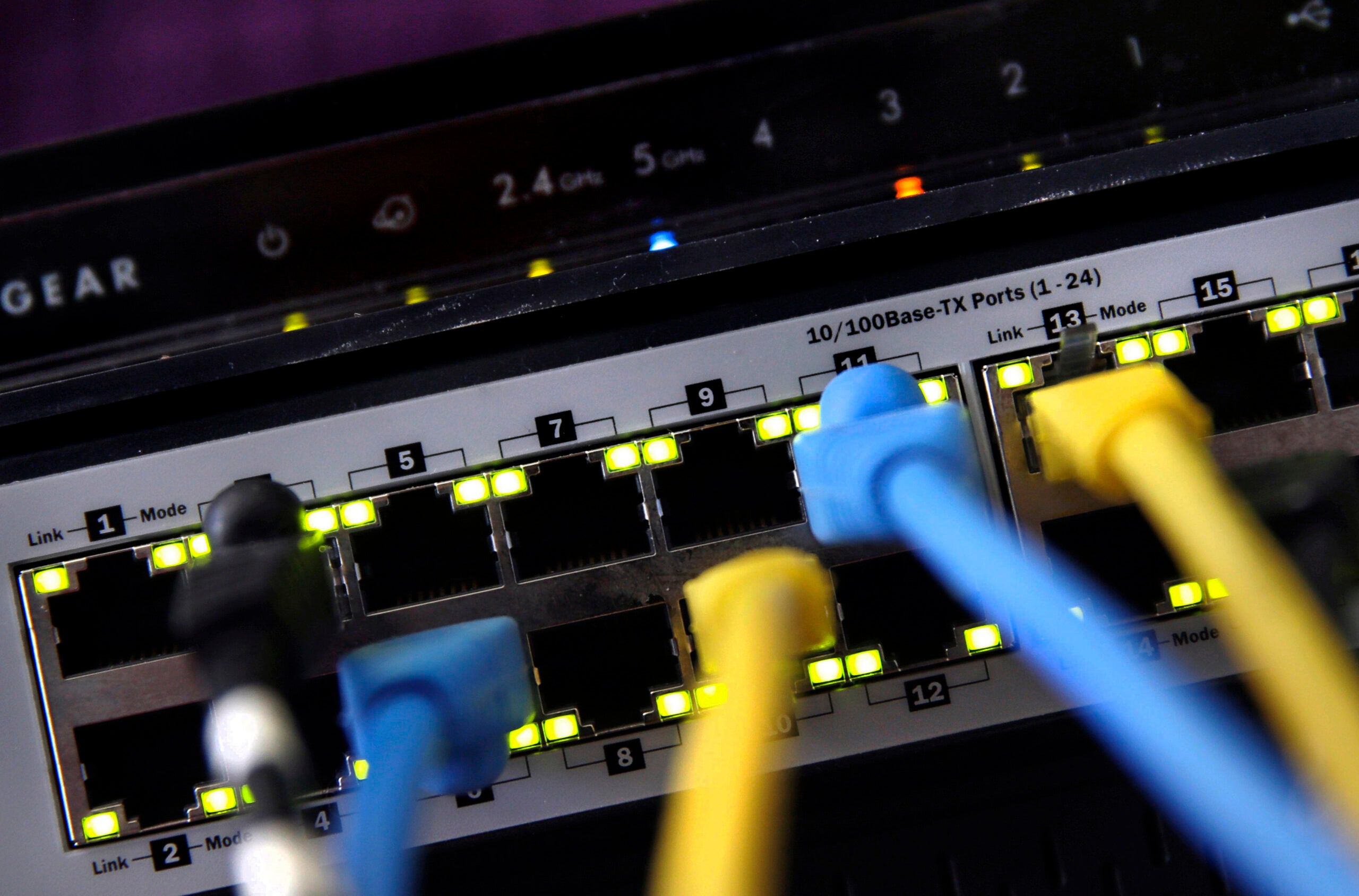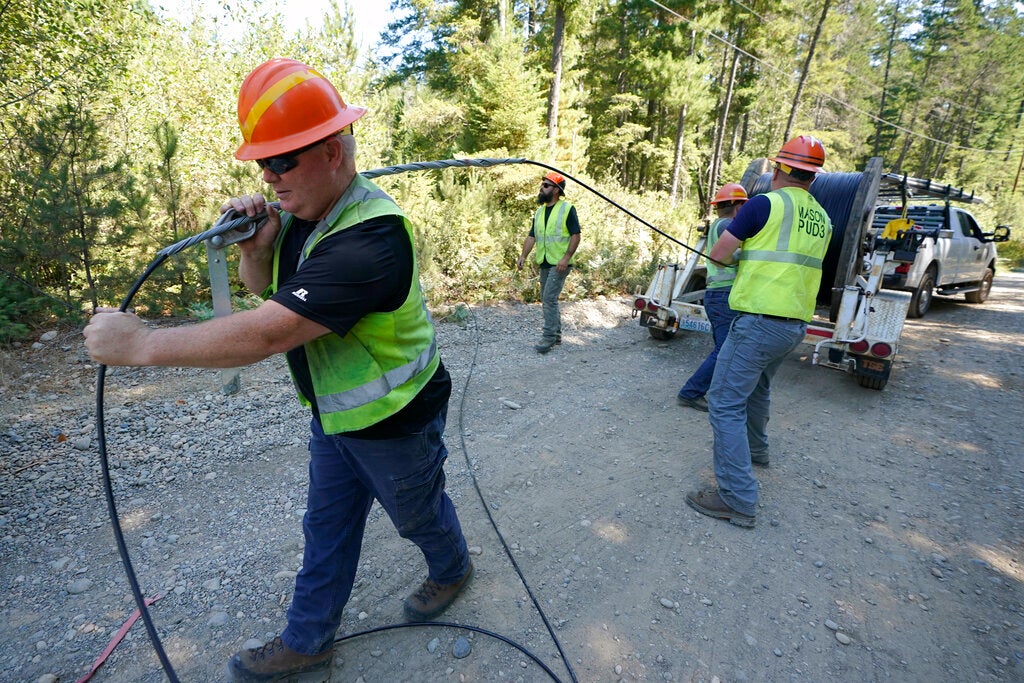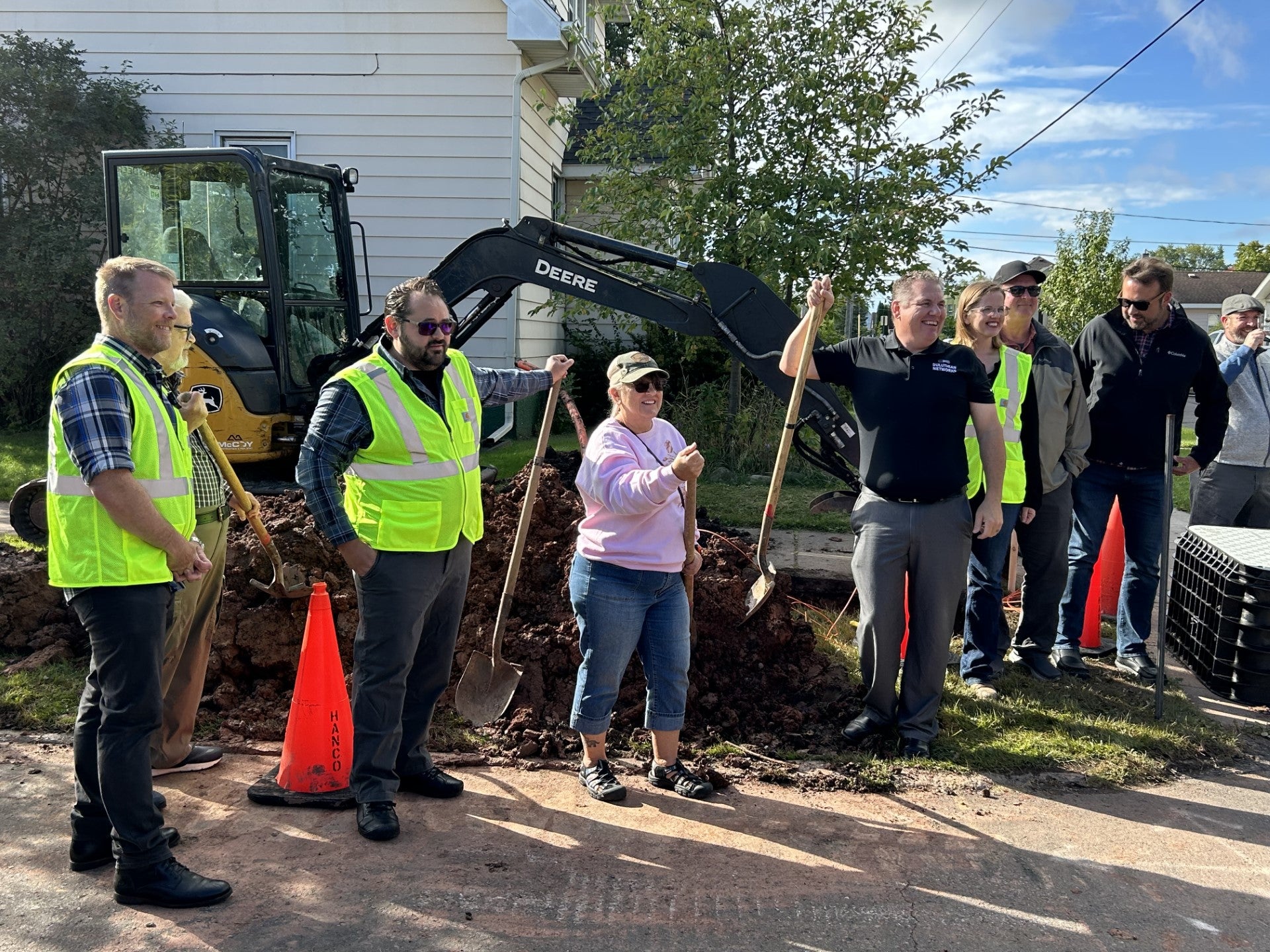Government and industry stakeholders met Tuesday to discuss how Wisconsin can best spend up to $1.2 billion the state may receive for expanding high-speed internet. The funding comes as around 1.3 million people in Wisconsin still can’t access or afford broadband service.
Wisconsin could receive anywhere from $700 million to $1.2 billion as part of grants available through the Broadband Equity, Access & Deployment, or BEAD, Program. The $42.45 billion program was established by the bipartisan infrastructure law, which set aside $65 billion to expand broadband internet nationwide.
The program is among several funding opportunities announced by the National Telecommunications and Information Administration, or NTIA, under the U.S. Department of Commerce. It’s part of President Joe Biden’s “Internet for All” initiative announced in May, and Wisconsin will receive a minimum of $100 million under the law.
News with a little more humanity
WPR’s “Wisconsin Today” newsletter keeps you connected to the state you love without feeling overwhelmed. No paywall. No agenda. No corporate filter.
“This funding will go to help build out broadband networks to make sure that people who live particularly in rural areas have access to high-speed internet,” said Kevin Gallagher, senior advisor to the U.S. Secretary of Commerce. “We also expect that funding can be used for digital literacy and adoption activities, affordability programs to help families in Wisconsin who are struggling to pay their internet bill.”
Gallagher is among government, tribal and industry officials who took part in a workshop in Stevens Point hosted by NTIA and the Wisconsin Public Service Commission or PSC. The workshop is part of efforts to develop a statewide five-year plan for funding. The NTIA will award money to states based on the number of unserved and underserved residents as defined by maps from the Federal Communications Commission or FCC.
In Wisconsin, around 650,000 residents lack access to high-speed internet or speeds of 25 megabits per second download and 3 megabits per second upload. The Wisconsin Broadband Office also estimates another 650,000 people statewide can’t afford broadband.
“We can build out networks to all of Wisconsin, but if families can’t afford to sign up for the internet, those networks will go unused,” Gallagher said. “So, affordability is a core piece of the ‘Internet for All’ initiative.”
The bipartisan infrastructure law set aside $14.2 billion for the Affordable Connectivity Program, which lowers internet bills by up to $30 per month for eligible households. On tribal lands, customers could see bills cut by up to $75 per month. Households with an income at or below 200 percent of federal poverty guidelines are eligible for the discount, and people can sign up online.
The White House estimates 849,000 households could receive the benefit statewide. So far, around one third, or roughly 276,000 households, have enrolled in the program, according to the nonprofit Universal Administrative Service Co. that oversees funding.
Under the BEAD program, unserved locations are prioritized to access grants if they lack internet or only have access to speeds of 25/3 megabits per second, which is enough for basic video streaming. Underserved locations that have speeds of 100/20 megabits per second would also qualify for funding. Speaking with Wisconsin Public Radio this summer, PSC Chair Rebecca Valcq said the definition of adequate speeds for broadband internet shifted as people began working or learning from home during the COVID-19 pandemic.
“The data that’s being used and needs to be uploaded and downloaded has increased by more than 30 percent since the start of the pandemic, which demonstrates the 25/3 (megabits per second) is not going to be sufficient to keep people connected in the way that they need connectivity now in 2022,” Valcq said. “So that means that some of those dollars are going to have to be deployed to bring service up from where it currently sits.”
Wisconsin’s share of funding will be based on FCC maps, which have been criticized for containing incomplete data. Until recently, the FCC has been collecting data on the number of people served by census blocks. If even one person had high-speed internet within a block, the entire census tract was considered to have access to broadband coverage.
Internet service providers have been updating that data with federal regulators. For the first time, Gallagher said new maps will portray coverage at the household level, and he expects those maps will be updated in November. States will have the ability to challenge the accuracy of the FCC’s data.
“We have to ensure that we know exactly who’s getting the service, otherwise, we will leave people behind,” Valcq told WPR.
Wisconsin is also set to receive up to $30 million over the next five years under a state capacity grant program through the Digital Equity Act. The program aims to provide broadband access for all, including communities of color, people living with disabilities, and incarcerated individuals. The state expects to learn its share of federal funding early next year.
The Tribal Broadband Connectivity Program also received $2 billion more under the infrastructure law. The program has already awarded $1 billion to more than 90 tribes like Red Cliff and Lac du Flambeau, according to Theron Rutyna, a program officer and former member of the governor’s broadband task force.
“Hopefully, we can bridge not only the digital divide for Indian country, but for all of Wisconsin,” said Rutyna.
Staff with the PSC estimate it may cost up to $1.4 billion to connect all residents to high-speed internet, according to the state’s Legislative Fiscal Bureau.
Wisconsin has already awarded more than $300 million over the past decade for broadband expansion, including $105 million in COVID-19 relief.
The Legislative Audit Bureau released a report in September that raised concerns about spending oversight of COVID-19 funds to expand broadband service. The report said the PSC should establish written policies and improve how it reviews and awards grants. In a letter, Valcq disputed some of the audit’s findings. She noted the audit found no unallowable expenses, adding the NTIA rated the state’s programs as “best in class” for clear documentation in the application and award process.
Editor’s note: A previous version of the story said the FCC would award funding, but the NTIA will award funding based on data from FCC maps.
Wisconsin Public Radio, © Copyright 2026, Board of Regents of the University of Wisconsin System and Wisconsin Educational Communications Board.




